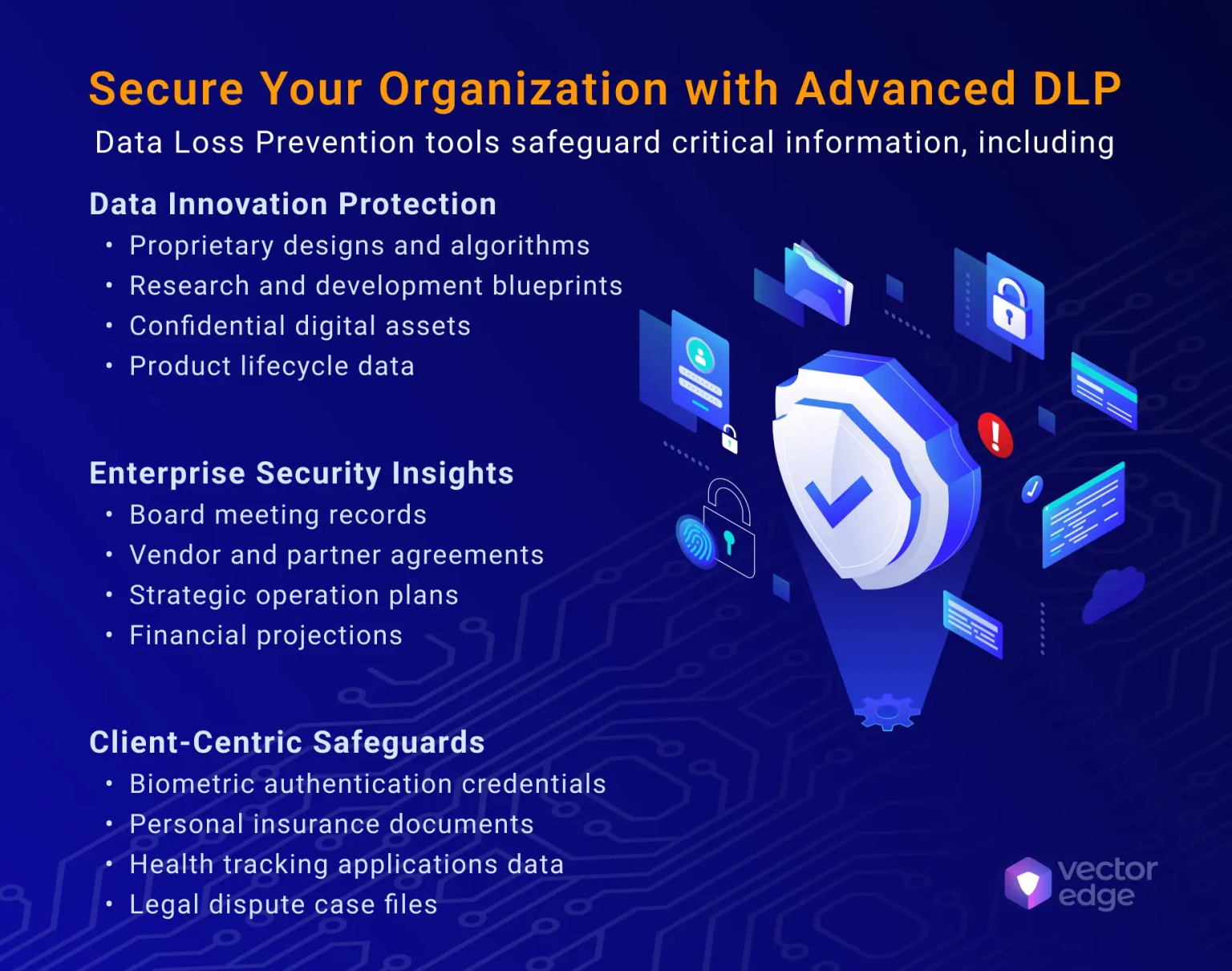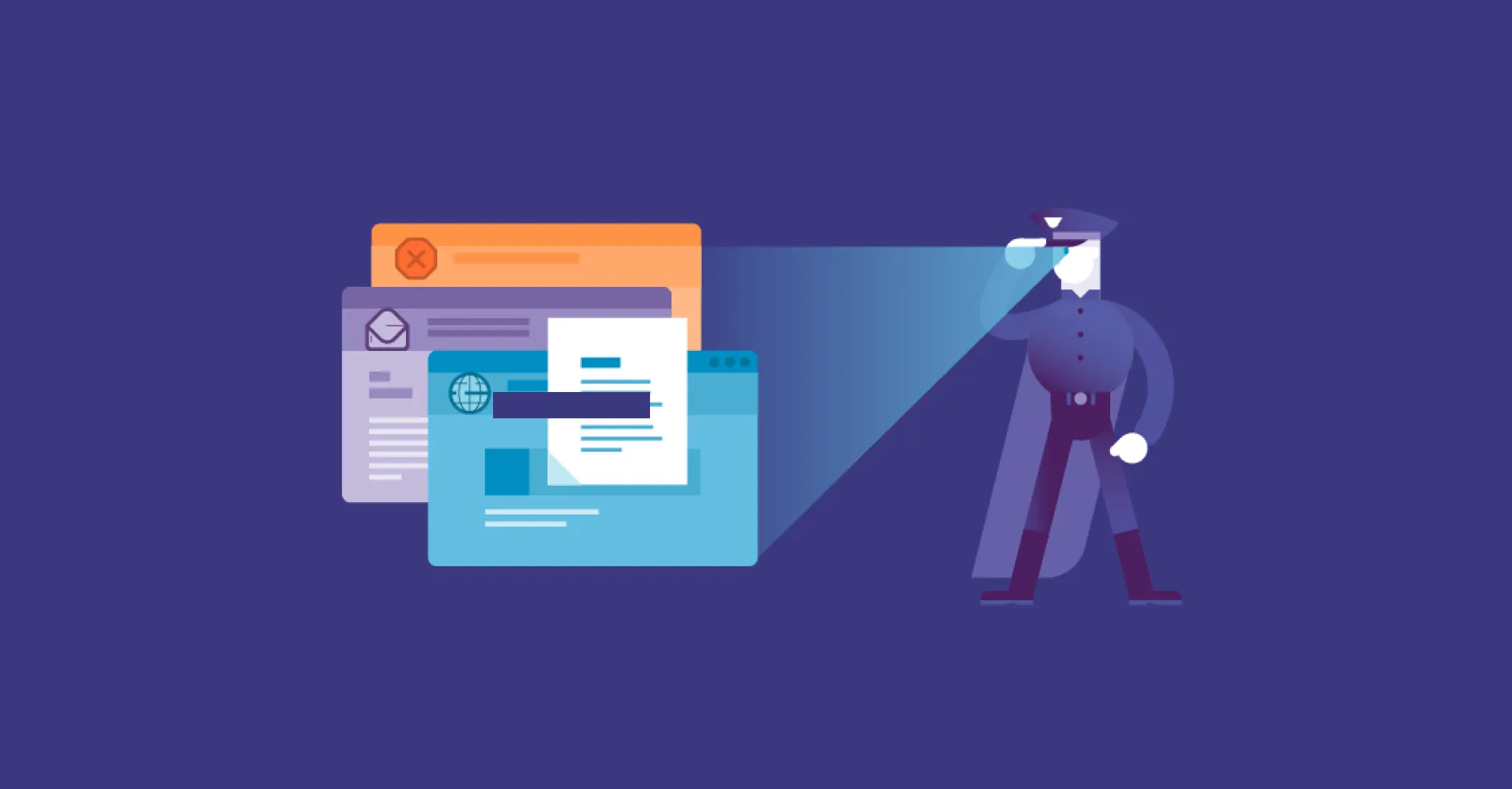Today, information and technology are central to every business activity. Because of this, protecting sensitive information has become crucial for organizations. There has been an increase in data breaches and tighter compliance regulations; therefore, reaching institutions' targets requires integrating advanced frameworks in bundling their sensitive information. Enter Advanced Data Loss Prevention (DLP)—an intelligent way to protect your digital resources.
What is Advanced DLP
DLP stands for Data Loss Prevention, which ensures sensitive data is not accessed, used, or transferred to unauthorized parties. Traditional DLP tools tended to be reactive and focused on detecting and stopping known threats. The same is true for Advanced DLP, which focuses on improving and adding proactive measures for data protection. It involves using modern technologies and strategies to address the changing threats and challenges of data protection.
Such change enables enterprises to thwart fresh risks and secure their essential information more efficiently.
Critical Components for Advanced DLP
Context-Aware Monitoring Advanced DLP systems are not designed to look for a word or a pattern. You can determine how and in what context data is being used or transferred by looking at the user, the data, or the environment. This contextual perception can better help assess data handling and possible risks.
Machine Learning and AI:
The truth is that with Advanced DLP, machine learning and AI are the way forward. These technologies allow systems to recognize patterns and behaviors.
They can detect unusual activities and respond quickly to new threats. AI-based DLP will better tell the difference between actual activity and harmful ones. This will reduce false positives and improve security.
Behavioral Analytics Advanced DLP solutions:
Can theoretically monitor user behavior and permissions throughout the DLP process and use that information to identify unusual or high-risk behaviors with some potential for breach or insider threat. Behavioral analytics help track time and the extent of changes caused by unusual actions. These actions can trigger a high-risk alert or prompt a proactive response.
All companies will use cloud and mobility services, and DLP should also work in these environments. Today's solutions address this problem by offering more protection options for cloud storage, Software as a Service (SaaS), and endpoint devices.
So, such a comprehensive approach provides a secure storage of confidential information in the environment.
Data Classification and Labeling:
initiate data control by identifying the controlled information and understanding its sensitivity classification.
Most powerful DLP systems today have advanced data classification and labeling. These features can index data based on sensitivity and compliance needs. This ranking helps implement the proper security measures and policies.

Best Practices for Implementing Advanced DLP
Assess Your Data Risks Identify what sensitive data your organization deals with and establish what vulnerabilities exist. This will allow you to understand the data landscape of your Advanced DLP strategy associated with specific risks.
Your organization sets clear policies and objectives that align with its direction and requirements for protecting the data mandate. Be sure to define sensitive data, handling procedures, and acceptable use policies.
Comprehensive Solutions Look for Advanced DLP solutions providing comprehensive features, including context-aware monitoring, AI integration, and cloud compatibility. A more comprehensive solution will provide better coverage and adaptability to rising threats.
Educate and train your employees. Introducing technology cannot secure a company from an unexpected breach. Teach employees about the best ways to protect information. Explain the 'compliance principles' and how preventive measures can keep them safe from threats.
Vigilance is awareness-based and an essential component in preventing data breaches.
Data protection is not a one-time activity. Regularly review and update DLP policies and technologies to reflect new threats and changes in your organization's data environment. The best way to maintain robust data security is through constant improvement.
Role of Regulatory Compliance in Advanced DLP
Many industries become compliance-driven as they adopt emerging data protection measures. Examples include GDPR in the European Union, HIPAA for healthcare in the United States, and CCPA in California, placing extremely high expectations on organizations regarding how they handle and protect personal data. In these instances, it is more of a necessity to comply with the regulations because there can be serious repercussions, from fines to reputation damage.
Advanced DLP systems incorporate compliance-focused features to ensure organizations comply with the requirements. Such include auditing tools for data access, elaborative reporting on compliance, and automatic implementation of policies according to the relevant legal standards. For instance, Advanced DLP enables pseudonymization and encryption, two critical stipulations under GDPR. Compliance will lead to better protection of sensitive data and bolster confidence in customers, stakeholders, and regulatory bodies.
Advanced DLP and AI-powered threats
Data security faces all the new cybercrime threats in a changed scenario: growing AI usage from cyber-criminals. Using traditional measures, locating a threat with deepfake-based social engineering, sophisticated malware, and automated phishing attacks will be tough. Advanced DLP should possess AI capabilities that provide inherent intelligence for recognizing abnormal behavior and blocking activities before escalation.
For example, advanced DLP using AI could pick up even the slightest variations in data transfer patterns that might signal a malware infection or data exfiltration. Continuous learning and adaptation enable AI-enabled DLP to predict and avoid other emerging risks that might not come under the detection range of other conventional DLPs. Because cyber threats are becoming increasingly sophisticated, this becomes an instrumental tool for organizations seeking to stay ahead of these threats.

Here are some real-world examples of protecting sensitive data with advanced data loss prevention (DLP) solutions:-
Financial Sector Example:
Protecting Customer Data in Banks
Scenario: An international bank handles high volumes of customer confidential data, including accounts, other transaction history, and identification information.
The bank's Advanced DLP uses intelligent monitoring and machine learning to spot unusual access patterns.
For example: if an employee attempts to transfer large amounts of confidential client data to an external device, the system immediately flags this activity.
Outcomes: Advanced DLP stops unauthorized data extraction and alerts security teams in real time. This protects sensitive information and ensures compliance with regulations. Ultimately, it helps safeguard the bank's reputation and client trust.
Example in the Tech Industry:
Software Firm Intellectual Properties Protection A software development company develops proprietary software solutions and deals with sensitive intellectual property, including source code and product roadmaps.
Advanced DLP tools use the latest machine learning and AI to find possible IP theft. A system becomes trained on how employees access and transfer data with the company's legitimate interest. It flags deviation as if an employee downloads or shares sensitive files outside a safe company network.
Outcomes: Advanced DLP systems detect unusual data transfers and stop unauthorized access to or sharing of important information. This helps protect the company's competitive edge and prevents potential financial loss.
Why Do Businesses Trust DSPM for Data Protection? Check out our guide on DSPM Security Solutions for Data Protection .
DLP in Identity and Access Management Systems
One more layer of data security would involve integration with Identity and Access Management systems through Advanced DLP. IAM tools manage user identities, permissions, and access rights of who can access what has become appallingly granular. An IAM coupled with Advanced DLP could thus form a much more dynamic security framework that verifies identities and enforces data protection policies.
This integration allows DLP to align with IAM in determining potential threats. For example, if an employee suddenly changes access level or attempts to access data not within their usual permissions, advanced DLP could flag the activity and block the access or alert the concerned security personnel. The combined approach supports data integrity, mitigates insider threats, and gives a better view of the access patterns that it ascertains.
Advanced DLP: Use in Hybrid Work Environment
With the evolution of remote and hybrid work becoming the norm, an advanced DLP solution faces an entirely new challenge. In a scenario where employees can access data at various locations, protecting endpoint security is now exceedingly complicated. Advanced DLP systems protect information beyond traditional office networks, ensuring security regardless of where employees work.
For instance, Advanced DLP can keep track of and protect information on mobile devices, meaning that data accessed on personnel or company-issued equipment outside the corporate network is secure, with features such as geolocation, secure VPN connections, and security policies specific to certain devices. Advanced DLP delivers real-time continuous protection across a dispersed workforce in a hybrid work model by harmonizing modern business needs, ensuring that employees' data remains secure no matter where they are.
Advanced DLPs: Emerging Trends and Innovations
The field of data protection is changing continuously with new technologies and trendy leaps that change the operation of DLP solutions. Some of the essential trends of Advanced DLP include predictive analytics integration in systems to enable the prediction of prospective data security issues before they occur and blockchain usage in superior data tracking and audit trails.
More emerging technologies in the pipeline, such as quantum computing, may further change the face of DLP, as they offer promise and threats to making encryption impossible through increased decryption power. Advanced DLP will evolve as more organizations call for ethical guidance on how to use data responsibly and avoid misusing sensitive data. Organizations will also prepare for future requirements and update their data security strategies based on these trends.

Conclusion
Indeed, the mechanisms of potential threats against sensitive information have changed. Protecting sensitive information means recognizing evolving data security threats. Advanced loss prevention is the latest in data protection. It uses tools and techniques to reduce new risks.
Advanced DLP will protect businesses' digital assets and compliance and support trust with customers and other stakeholders.
It calls for proactive vigilance about potential threats that menace its sites in the digital era. However, Advanced DLP secures your data and prepares it for whatever happens in the future.
What’s Next?
Here are two steps you can take today to enhance your organization's data security and minimize risk:
- 1. Book a Personalized Demo Schedule a demo to see our solutions in action. We’ll customize the session to address your specific data security challenges and answer any questions you may have.
- 2. Follow Us for Expert Insights Stay ahead in the world of data security by following us on LinkedIn, YouTube, and X (Twitter). Gain quick tips and updates on DSPM, threat detection, AI security, and much more.
Saniya Khatri |
Saniya Khatri is a cybersecurity research and analytics professional at Vectoredge, with four years of expertise in analyzing emerging threats and crafting actionable insights. Specializing in AI-driven attacks, data protection, and insider risk, Saniya empowers organizations to navigate the evolving threat landscape with confidence. Her work bridges technical depth with strategic clarity, driving informed decision-making in cybersecurity.

